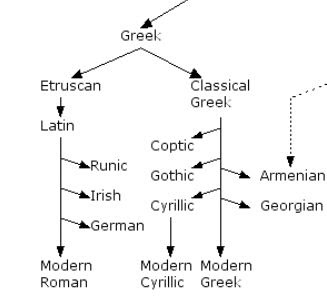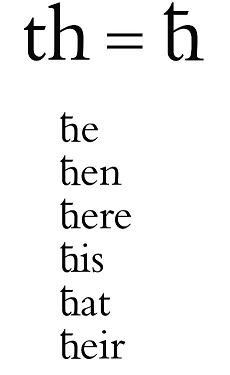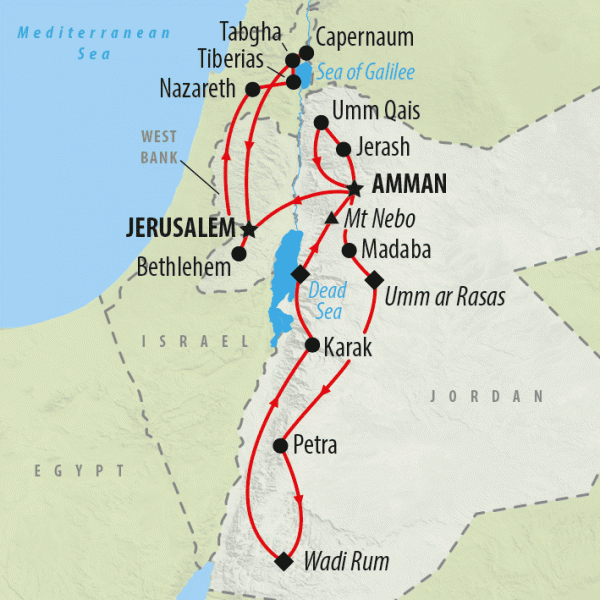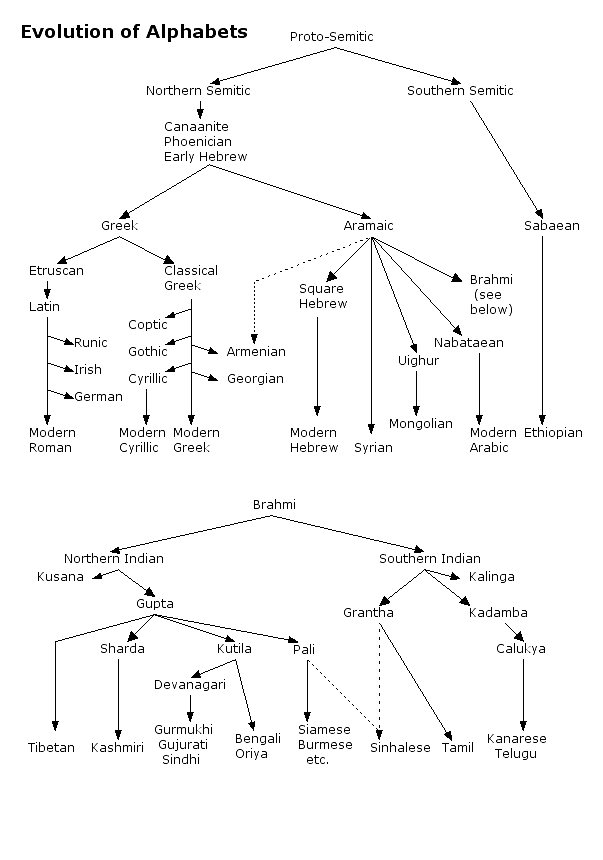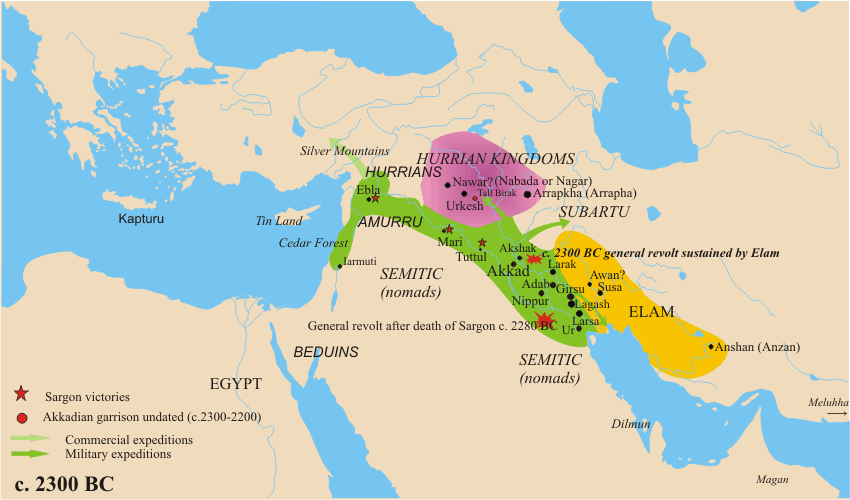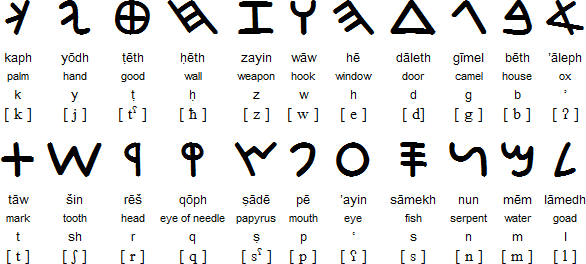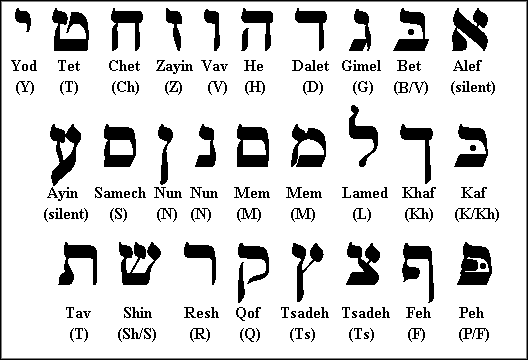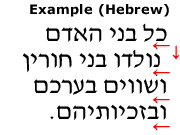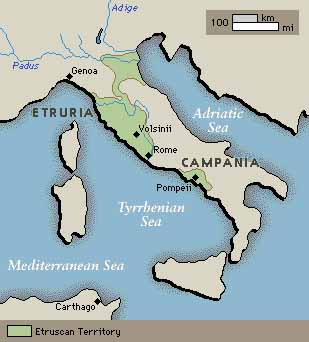The original brief was the following:
“The spread of the original alphabet and its adaptation by various peoples around the world in the period 2000 BC – 2000 AD”.
As well I posed a number of questions:
1. Why was it that the symbols used by people before the time of the Greeks and the Phoenicians are not generally regarded as contributing significantly to modern alphabet languages?
2. To what extent were the Greeks and the Phoenicians responsible for laying the foundations of modern alphabet languages?
3. What other races had a significant part to play in laying the foundations of modern alphabet languages, and to what extent?
4. How is it that Asian languages and those based on the Cyrillic alphabet have characters which are so different from the 26 letter “Western” alphabet?
Some progress was made in regard to questions 1&2. Question 3 was found to be ill-posed in that there was confusion between "race" and "alphabet" and even "writing system".
research findings
The Rosetta stone provided a crucial stepping stone in the deciphering of ancient Egyptian writing.
 The consonantal alphabets added special markings to existing "letters" so that vowel sounds could be explicitly incorporated in writing. In the case of speakers of Ancient ("Square") Hebrew, this was done for pragmatic reasons. Local languages were adopted for convenience, and spoken Hebrew was relegated to religious ceremonies. With this relegation came loss of familiarity with the spoken language and the previously "understood" placement of vowel sounds. The diacritics were adopted to maintain the integrity of Hebrew pronunciation for subsequent generations.
The consonantal alphabets added special markings to existing "letters" so that vowel sounds could be explicitly incorporated in writing. In the case of speakers of Ancient ("Square") Hebrew, this was done for pragmatic reasons. Local languages were adopted for convenience, and spoken Hebrew was relegated to religious ceremonies. With this relegation came loss of familiarity with the spoken language and the previously "understood" placement of vowel sounds. The diacritics were adopted to maintain the integrity of Hebrew pronunciation for subsequent generations.This is the Neo-Punic alphabet from around 4th century AD. It is a consonantal alphabet - it has consonants but no vowels.

The alphabets from which the modern Roman alphabet derives, used a variety of writing directions. Some wrote right to left, some right to left then turned around and came back left to right, amongst other variations. Some had multiple versions of the one letter, apart from upper and lower case. Some alphabets (the consonantal ones) incorporated diacritics (which are similar in one sense to the French accents) yet served to add a vowel sound to an existing letter. Modern Hebrew still employs these diacritics. Languages freely borrowed letters from one another, sometimes so that borrowed foreign words could be written, and sometimes because the language's alphabet wanted another sound (or even a vowel!). The Etruscan alphabet is an example of one which derives from a variety of the Greek alphabet. Etruscan letter looked like this:

The Latin alphabet is the "parent" of most Western European alphabets and it comes from the Greek alphabet, and was also influenced by the Etruscan alphabet. However some, like Vajda, see the Greek alphabet as the most important root of modern alphabets.
Here is a diagram due to Boeree:

A common question about the Modern Roman Alphabet, when compared with the Latin Alphabet, is "Where did the lower case letters come from that we have today?". Some say that lower case letters were invented by scribes in the Middle Ages as "contractions" or "faster versions" of the normal "capital" letters.
For those who are still mystified by the title of a TV drama called "I CLAVDIVS", the following may help. The letters K, X, Y and Z were only used for writing Greek (except for Roman numerals). The letters J, U, and W were much later additions. J is a variation of I, and U is a variant of V. Thus:
Latin "IVLIVS CAESAR" = English "Julius Caesar"
The W was introduced as a "double-v" to identify a sound that developed later, differentiating it from the "v".
It is no accident, also, that Caesar is reminiscent of Tsar, but that is a whole new blog.
To finish, but how? The alphabet we use is an amazing melting pot of 4,000 years of flux. We have dealt with writing on cave walls, to writing on pyramids. We have found fragments of script, that must wait 2,000 years before we can read them. A chance discovery by an 19th century physicist/surgeon who just "happened" to be an ancient language expert, was the key to an astounding mystery - the Rosetta Stone. We have seen languages without vowels, decide to "borrow" them. We have seen alphabets change themselves to look like others, increase in size and even reduce! There were the "Enigmatic Etruscans" who just seemed to assimilate into Roman society before the Roman Republic was established - and their literature was lost forever! We cannot leave out the Hebrew alphabet - the longest continuously recorded (and still spoken) language in the world!
I managed to cover not half of what I intended, but the trip has been fascinating. The future? The future must bring change. Change has been the one constant theme in this blog. I wonder what our alphabet will look like in 1,000 years time?
Thanks for reading.
Tez
------------------------------------------------------------------------------------------------
bibliography
Agar, S 2010, Etruscan alphabet, Omniglot: writing systems & languages of the world, viewed 8 May 2010, http://www.omniglot.com/writing/etruscan.htm
Agar, S 2010, Latin Alphabet, Omniglot: writing systems & languages of the world, viewed 17 May 2010, http://www.omniglot.com/writing/latin.htm.
Agar, S 2010, Syllabaries, Omniglot: writing systems & languages of the world, viewed 25 April 2010,
Agar, S 2010, Writing direction index, Omniglot: writing systems & languages of the world, viewed 25 April 2010,
Boeree, CG 2009, The evolution of alphabets, Shippensburg University, viewed 8 May 2010, http://webspace.ship.edu/cgboer/evolalpha.html.
Boeree, CG 2009, The origin of the alphabet, Shippensburg University, viewed 8 May 2010,
http://webspace.ship.edu/cgboer/alphabet.html
‘Etruscan Myths’, review of Etruscan Myths by L Bonfante& J Swaddling, University of Texas, viewed 8 May 2010,
http://www.utexas.edu/utpress/excerpts/exbonetp.html
Hooker, R 1996, Rome: the Etruscans, Washington State University, viewed 8 May 2010 http://www.wsu.edu/~dee/ROME/ETRUSCAN.HTM
Robson, E 2009 ,Cuneiform script and the Sumerian and Akkadian languages, Knowledge and Power, Higher Education Academy, viewed 25 April 2010,
‘The religion of the Etruscans’, review of The religion of the Etruscans by NT de Grummond & E Simon, University of Texas, viewed 8 May 2010,
http://www.utexas.edu/utpress/excerpts/exdegrel.html
Vajda, E 2006, The alphabet, Western Washington University, viewed 17 May 2010,
http://pandora.cii.wwu.edu/vajda/ling201/test4materials/Writing3.htm.
Vajda, E 2006, Phonetics, Western Washington University, viewed 17 May 2010,
http://pandora.cii.wwu.edu/vajda/ling201/test2materials/phonetics.htm.
van der Meer, LB 2008, 'Liber Linteus Zagrabiensis: A Comment on the Longest Etruscan Text',Bryn Mawr College, viewed 8 May 2010, http://bmcr.brynmawr.edu/2008/2008-05-37.html
Worley, G 2007,'Rethinking the English Alphabet', Red Bird Island, viewed 17 May 2010,
http://homepage.mac.com/redbird/personal/E20070407212055/index.html.









